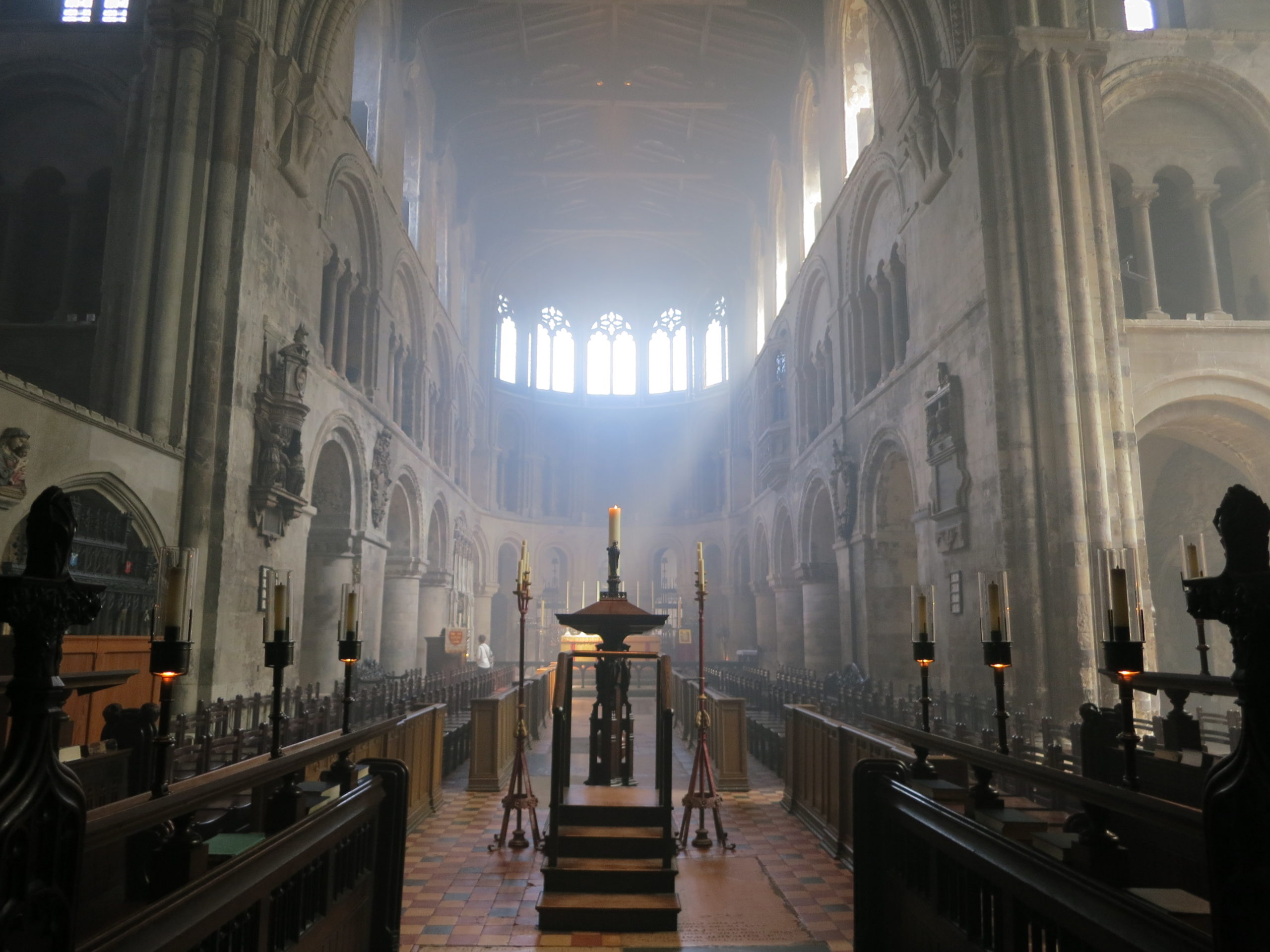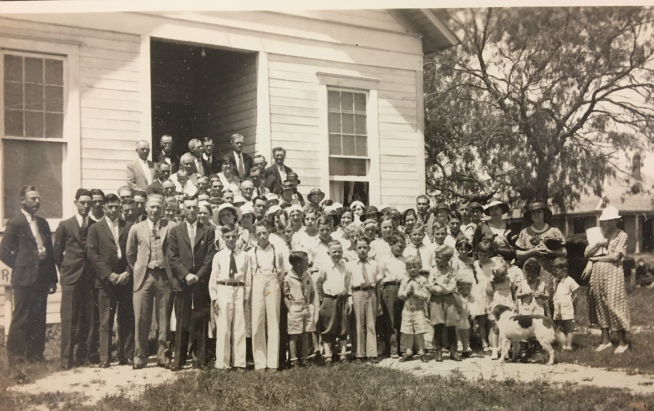A Reasonable Reading List for Medieval Christianity: Part 2

If you ever have the chance, visit the church of St. Bartholomew the Great in London
St. Bart’s, as it is affectionately known, stands in Smithfield, just outside the old London wall. I recommend a Sunday morning walk to it from St. Paul’s Cathedral. Go about 9:45 a.m. to hear the Cathedral bells; you can even grab a coffee. Then head down St. Martin’s-le-Grand and cut left through Postman’s Park (a delightfully Victorian monument to unsung heroes). Take a right on King Edward’s Street and follow it until it merges with Little Britain; then follow Little Britain around the hospital complex to Smithfield circle.

I have written about Smithfield before. So much history has happened here. Jousting contests routinely took place on the medieval green from 1357 until the 1480s, including the infamous 2-day joust in 1467 between Anthony “the bastard” of Burgundy and Edward IV’s brother-in-law Anthony Woodville. St. Bartholomew’s fair was held at Smithfield every August for 3 days throughout most of the medieval and early modern era (the beginning of Smithfield market…). It is the site of the poll tax revolt of 1381 when the rebel leaders Wat Tyler, Jack Straw, and John Ball (‘When Adam delved and Eve span, who than was the gentleman?’) met with their teenage king Richard II. And it was here, at Smithfield, that two of those poll tax leaders died–Wat Tyler (stabbed) and Jack Straw (beheaded)–just as it was here that the Scottish hero William Wallace was killed in 1315 (hanged, drawn, and quartered during the 1315 St. Bartholomew’s Fair) and here that both Protestant and Catholic martyrs met their end in Reformation fires, including Anne Askew who was burned at Smithfield in 1546.

The Tudor Gate at Smithfield
Once you have walked round the circle and read the monument stones, look back to the Tudor Gatehouse. You can’t miss it. Walk through the opening and you should find yourself in time for the 11:00 a.m. Sunday service at St. Bart’s. This, I think, is the closest experience possible (at least possible in London) to a late medieval church service. Parish churches were supposed to celebrate high mass once a day, along with morning and evening services for matins and vespers. This was a sung Eucharist. Poorer, more rural churches would have made do with the priest singing alone or possibly with a local choir of male parishioners. Wealthier, often more urban, churches sometimes hired professional choirs–just like the choirs who sing Eucharist at St. Bart’s. The rich notes of the formal liturgy fill the round Norman chancel, the air thickening from the smoke of incense burners. The bible is read throughout the service, with texts from the Old Testament, the Gospels, and the Epistles, along with the priest–fully garbed in ecclesiastical robes–delivering a sermon and celebrating mass at the high altar. Even the banns for an upcoming wedding are read…..Only the printed orders of service and the rows of chairs (not to mention the very modern clothing) jars the experience.

If only we could really sit through a medieval church service, I think we would have a much better understanding of medieval Christianity.
But we can’t (sorry Michael Crichton). So here is my beginning list of medieval readings to try and help you understand the late medieval English faith experience.
Happy reading!
The Bible: In keeping with my promise to be as price conscious as possible, this source is free. I recommend finding an online text of the Wycliffite Bible or at least a 1611 King James Version with the apocrypha. The Bible is absolutely essential for understanding medieval Christianity. Forget all the stuff about medieval people not having access to the Bible. I have talked about this before, and I will talk about it again (in fact, next week!). The Bible formed the crux of medieval faith.
The Lay Folk’s Catechism, a fourteenth-century text outlining the basic tenets of faith that medieval people should know, starts with the Lord’s Prayer (the Pater Noster, Matthew 6:9-13), the Ave Maria (Luke 1:28-42), and the Apostle’s Creed (a clear articulation of the Trinity and understanding of the salvific work of Christ as presented by the Gospels). These are followed by The Ten Commandments (Exodus 20:1-17 and Deuteronomy 5:6-21), the Seven Works of Mercy (Matthew 25:35-45) and the Seven Virtues (Faith Hope and Love directly from Corinthians 13:3). It is important to note that The Lay Folk’s Catechism relates all these biblical texts in English (not Latin). Biblical texts from the Old Testament, the Gospels, and the Epistles were regularly read in church services, taught in sermons (translated into English), and even sung in the liturgy (such as the Magnificat from Luke 1:46-55, Nunc Dimmitis from Luke 2:29-32, Benedictus from Luke 1:68-79, and Te Deum from Psalms 95). Many of these texts were recited (sung) in Latin, but (as I have already noted) some were also translated into English. Next week I will talk about the difference between biblical passages favored in the Medieval church as compared to modern Evangelicals (a top list of medieval vs. evangelical bible verses). As a preview, read your Gospels well if you want to understand medieval Christianity. And you can mostly ignore Romans…..
The Golden Legend: Medieval people believed in a community of believers that stretched from heaven to earth. They found great comfort in hearing the stories of heroic believers (including biblical figures) who stood fast in their faith, fought devils and pagans, and wielded apostolic healing (and helping) power. Indeed, they believed that this community worked as intercessors in heaven, literally the saints had the ear of God. Medieval people could call on these saints to intercede for them with God, both to help them in their current life (especially for healing) and to help them obtain salvation. If you want to understand medieval belief, you have to understand the saints and biblical stores that medieval people knew almost as well as their own family. The Golden Legend is a thirteenth-century collection of saint lives (hagiography). It was the most popular book in the middle ages, surviving today in somewhere around 1000 copies (absolutely amazing for medieval texts). Medieval people from Italy to England (although there is significant local variation) knew these stories. They heard them in church; they heard them from their parents; they made pilgrimages to the saint shrines; and they told these stories to their children. The Golden Legend also includes biblical figures, such as the life of Jesus, Old Testament patriarchs, and the apostles. You can get a free copy of The Golden Legend from Fordham University’s Internet Medieval Sourcebook. You can also buy good translations for under $30 (at least on your kindle). If you don’t want to read the entire text, I would at least read Volume 1 (Advent through the Ten Commandments), the chapters relating to the Virgin Mary, and a smattering of saints lives at your preference (St. Margaret is one of my favorites…).
The Book of Margery Kempe: So I thought long and hard about including this. It is absolutely my favorite medieval text. My students can attest to how I manage to get it into the readings or at least reference it in lectures in almost all of my classes. I use it in almost every article and book that I write. It is the autobiography (sort-of) of a late medieval woman desperately trying to live a holy life. Parts of it are beautiful, as Margery cries out to God and prays for her world. Parts of it are also very disturbing, as Margery is not a person you would want to have as your neighbor. She is very disruptive and you can see why people keep kicking her out of church and refusing to travel with her. But her story provides a good window into medieval Christianity. You will see frequent interactions between medieval people and clergy; you will hear the Bible quoted by clergy and ordinary people alike; you will learn about pilgrimage and the miracle of transubstantiation and the fear of hell. You will learn about a concept of “biblical womanhood” that has little to do with being a wife or a mother. The Book of Margery Kempe is also very inexpensive–you can get a Penguin classics edition for under $10. I would probably recommend the more expensive Norton critical edition as it contains more explanatory essays and helps for the reader (still under $25).
The Rule of St. Benedict: I cannot emphasize how important Monasticism was for medieval Christianity. These were people called by God to live separate from the world and to dedicate themselves to praying (seriously–hard core praying most of the day) for that world. Monastics were often heroes in the medieval church. Their work, Opus Dei, helped ordinary people along the salvific journey. Benedict of Nursia composed his rule in the early 6th century to help Christians called to the life of prayer and work–Ora et Labora. The Rule of St. Benedict describes what the monastic life should be (including the attributes of a monk) and explains how the monastic life should be organized and practiced (8 hours of prayer a day, 8 hours of sleep, 8 hours of work-manual, intellectual, charitable). If it sounds hard, it was. The first group of monks who tried to follow Benedict’s direction became so frustrated that they tried to murder Benedict himself! Benedict was miraculously saved and left to start a new monastery (Monte Cassino) with a group of more deserving folk (or maybe Benedict became less rigid in his expectations…). The Rule of St. Benedict became the most widely used monastic rule throughout the medieval world. If you want to understand monasticism and what monks and nuns were supposed to do, read this rule. It is short and very informative. It was adapted to work for female communities as well as male communities. You can read a modern version (that is adapted for both men and women) online here. You can also purchase good translations for under $10.






